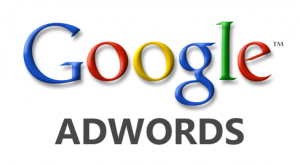 On April 22, Google unveiled a set of AdWords features and updates, adding a new set of resources to marketing toolboxes — and ending anticipation among advertisers everywhere. At a live stream event called “Step Inside AdWords,” VP of AdWords product management Jerry Dischler noted that the changes are based on a desire to step away from a focus on devices, but rather to connect users to the content they’re seeking, whether that’s through a mobile site, online or apps.
On April 22, Google unveiled a set of AdWords features and updates, adding a new set of resources to marketing toolboxes — and ending anticipation among advertisers everywhere. At a live stream event called “Step Inside AdWords,” VP of AdWords product management Jerry Dischler noted that the changes are based on a desire to step away from a focus on devices, but rather to connect users to the content they’re seeking, whether that’s through a mobile site, online or apps.
Over the next few months, Google will roll out a series of updates focused across three categories:
- Enterprise-class tools
- Mobile app market
- Estimated total conversions
These new utilities are designed to make marketer’s jobs easier by providing more insightful reporting, improve workflow, and help increase app engagement among target audiences.
Enterprise-Class Reporting, Workflow and Management Tools
Aimed at AdWord’s so-called “power users,” these enterprise-class tools are designed to enhance workflow, optimize project management, ease reporting, and be scalable across an organization.
Enhanced reporting features will provide users with drag-and-drop analysis and visualization tools within the AdWords platform, eliminating the need to import, download and reformat data. Advanced reporting also makes it easier to transform data into charts, reports and tables — kind of like Excel for AdWords. Plus, data can be organized into multi-dimensional visuals.
Bulk capabilities allow users to make edits across multiple campaigns, ads or ad groups all at once. This makes it simple to set up and update settings, such as ad rotation or geo-targeting, across large numbers of campaigns with just a click.
Automated bidding take the existing auto-bid feature — which maximizes clicks within a set budget — a step further. Advertisers can base automated bidding on total conversions or total value of conversions.
Mobile App Market
Noting that only 40% of the mobile apps downloaded in 2013 were actually installed — and that 80% of apps were used once then deleted — Dischler announced several features to enhance engagement of mobile users.
Keyword suggestions will offer keyword selection advice to advertisers, based on the most popular keywords entered into Google Play.
Existing apps will be used to target potential users. Ads will be based on which apps users already have on their devices and how often they use them.
App install ads can be embedded in YouTube videos, making it simple for users to download content-relevant apps.
App deep linking will nudge users back into apps they’ve already installed, increasing engagement and encouraging shopping within apps.
Estimated Total Conversions
Building on the popularity of the Estimated Total Conversions tool that was launched in 2013, Google announced that it would continue to expand the ability to track and measure conversion impact. New tools will allow for measurement of ROI in mobile campaigns, in cross-device conversions, and correlating in-store, brick-and-mortar sales to online advertising.
The goal? To provide marketers with a more complete picture of campaign effectiveness.
Overall, these new features bring a focus on enhanced measurement tools and an emphasis on engaging mobile users. As changes roll out in the new few months, it’ll be interesting to see how these new resources improve AdWords campaign efficiency.




